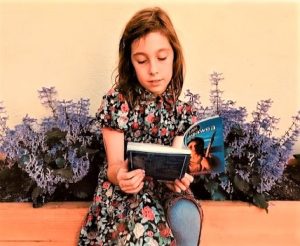
When children master that first R, reading, many parents have bittersweet feelings. They are naturally happy that their child is well on the road to literacy, but sad that the days of reading aloud together are over. Even though the mutually satisfying hours of reading Mother Goose, Richard Scarry, H. A. Rey, etc. are gone, a parent and child can enjoy a new phase of literature together by discussing books in depth.
Asking a child, “What’s it about?” does little to draw out a solid discussion and often causes resentment. But if we ask meaningful questions and exchange ideas centered on the literary structure of a story, we are more apt to have a rewarding dialogue.
For example, 13-year-old Steve was reviewing a short novel in preparation for a quiz the next day. Since his mother had read the book, too, they could discuss the literary structure of this story by questions such as, Who was the protagonist? Who was the antagonist? Exactly where and when did the story take place? What conflict arose between the characters? What was the main action in the story? What were the climax and concluding actions that took place?
The tone of the discussion was kept informal and friendly while centering it on these questions. Steve discovered that, although he knew the general content of the book, he could not recall pertinent details needed for a good grasp of the story. He went back to the book to fill in these gaps, identifying specific names and exact locations. Finally, he felt he had a good knowledge of the story’s progression and characters. It was not surprising that, when similar questions were asked on the eighth-grade quiz, Steve was able to attack them with accuracy and confidence.
Whether the story is a school assignment or pleasure reading, we can apply the same approach. By combining questions with active interest and listening, we can help our children to share their reading and to work for a higher level of comprehension. Also, parents can share what they have read to show further how story analysis leads to more appreciation and enjoyment in reading. This will help the children gain a critical literary sense. For example, they may discover flaws such as shallow characters or a story that skips the introduction where the setting and characters are established and jumps right into the action.
Many benefits can stem from the parent and young reader discussing a book together. It is a year-round activity that may improve a child’s comprehension one time or correct an emotional reaction another time. Sometimes children are disturbed by a story and talking about it with a parent who has also read the book can settle their questions. Most of all, it will foster a lifelong recognition and appreciation of the elements of good literature as well as deepen the parent-child relationship with additional memories of sharing books together.